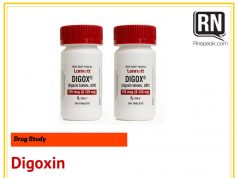Vitamin K (Phytonadione) Overview
Vitamin K (Phytonadione) is crucial for the prophylaxis and treatment of hemorrhagic disease in newborns. It facilitates the liver’s formation of clotting factors II, VII, IX, and X. Newborns typically lack the necessary gut bacteria to synthesize vitamin K, leading to potentially lower levels of prothrombin and extended prothrombin time in the initial days after birth.
Generic Name:
Vitamin K (Phytonadione)
Brand Name:
Aqua-Mephyton
Classification:
- Fat-soluble vitamins
- Antifibrinolytic Agents
Action:
Phytonadione is used in prophylaxis and treatment of hemorrhagic disease in the newborn. It promotes the liver formation of the clotting factors II, VII, IX, and X. At birth, the newborn does not have bacteria in the colon necessary for synthesizing fat-soluble vitamin K. Therefore, the newborn may have decreased levels of prothrombin during the first 5 to 8 days of life reflected by a prolongation of prothrombin time. Administering Vitamin K within the first hour of birth significantly reduces the risk of vitamin K deficiency bleeding (VKDB) in newborns (Centers for Disease Control and Prevention, 2020).
Route, Dosage, Frequency:
Intramuscular injection is given in the vastus lateralis thigh muscle. A one-time-only prophylactic dose of 0.5 to 1 mg is given intramuscularly in the birthing area within 1 hour of birth.
If the mother receives an anticoagulant during pregnancy, an additional dose may be ordered by the physician and is given 6-8 hours after the first injection. IM/subcutaneous concentration: 1 mg/0.5 ml (neonatal strength) can use 10 mg/ml concentration to minimize the volume injected.
Neonatal Side Effects:
Pain and edema may occur at the injection site. Allergic reactions such as rash and urticaria may also occur. Recent studies indicate a potential, although rare, risk of hematoma formation in neonates receiving Vitamin K injections (American Academy of Pediatrics, 2020).
Nursing Responsibilities:
Document the giving of the medication to the newborn to prevent an accidental doubling of the dose. Observe for bleeding (usually occurs on the second or third day). Bleeding may be seen as generalized ecchymoses or bleeding from the umbilical cord, circumcision site, nose, or gastrointestinal tract. Observe for jaundice and kernicterus, especially in preterm infants. Observe for signs of local inflammation. Apply pressure to the injection site to prevent further bleeding. Protect the drug from light. Give vitamin K before the circumcision procedure. Ensure parental education on the importance of Vitamin K prophylaxis to alleviate concerns and promote informed consent (National Institutes of Health, 2020).
References
- American Academy of Pediatrics. (2020). Guidelines for Vitamin K Administration in Newborns. Retrieved from https://www.aap.org/vitamin-k-guidelines
- National Institutes of Health. (2020). Vitamin K: Fact Sheet for Health Professionals. Retrieved from https://ods.od.nih.gov/factsheets/VitaminK-HealthProfessional/
- Centers for Disease Control and Prevention. (2020). Vitamin K and Newborn Health. Retrieved from https://www.cdc.gov/nutrition/vitamin-k








Is there application to download instead of going to website ???
Click the print button to download the content